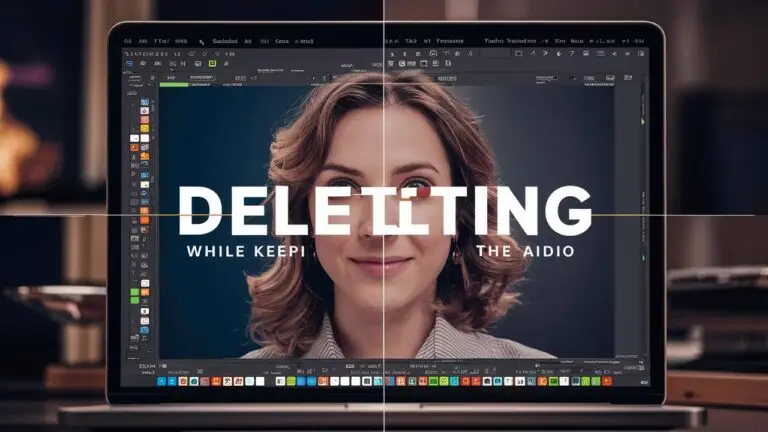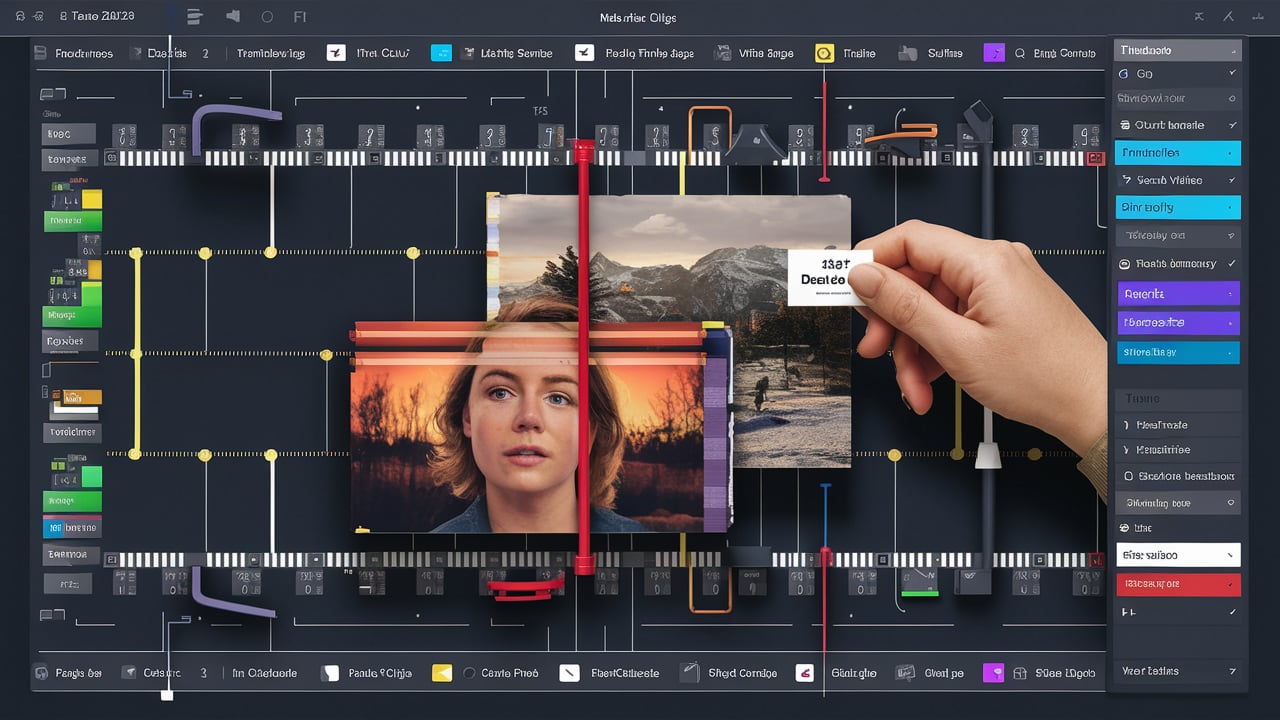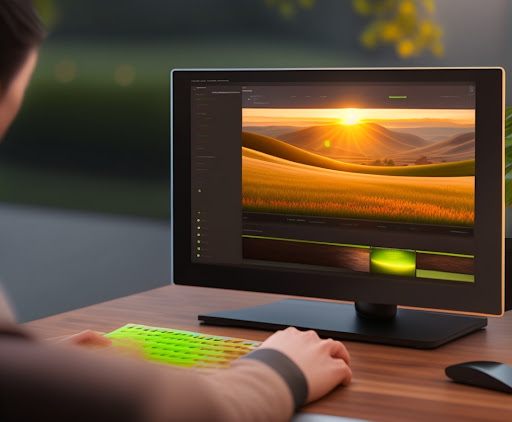DaVinci Resolve is renowned for its powerful video editing capabilities, but it can also be prone to unexpected crashes, which frustrate users. This article explores the main reasons behind these crashes and provides practical solutions to help you maintain a stable editing experience. Understanding and addressing these issues can enhance workflow and minimize disruptions using DaVinci Resolve.
Reason 1: Insufficient System Requirements
It demands specific hardware specifications to function smoothly. When your system fails to meet these requirements, it can lead to frequent crashes. Insufficient RAM, an outdated graphics card, or an underpowered CPU are common culprits.
To resolve this issue:
- Check DaVinci Resolve’s official website for minimum system requirements.
- Upgrade your hardware components if necessary, focusing on RAM, GPU, and CPU.
Ensuring your system meets these specifications will significantly reduce the likelihood of crashes and improve overall performance in DaVinci Resolve.
Reason 2: Outdated Software and Drivers
Using outdated DaVinci Resolve versions or obsolete hardware drivers can often result in stability issues and crashes. Software updates and driver patches frequently include bug fixes and performance improvements essential for a smooth editing experience.
To address this:
- Regularly check for updates within DaVinci Resolve.
- Update your graphics card and other hardware drivers to the latest versions compatible with it.
- Ensure your operating system is also up to date to maintain compatibility and stability.
By keeping your software and drivers current, you can mitigate many potential causes of crashes in DaVinci Resolve and optimize its performance on your system.
Reason 3: Incorrect Project Settings
Incorrect project settings can lead to instability and crashes in it, especially when they don’t align with your system’s capabilities or the specifications of your media files.
To address this issue:
- Always double-check and adjust project settings to match your media files’ resolution, frame rate, and codec.
- Ensure that your project settings are appropriate for the capabilities of your computer hardware.
- Avoid mismatched settings that could overload your system resources.
By correctly configuring your project settings, you can prevent crashes related to incompatible settings and ensure a smoother editing experience in DaVinci Resolve.
Reason 4: Overheating and Hardware Issues
Overheating and hardware malfunctions can significantly impact its performance, leading to crashes during intensive editing sessions.
To mitigate this:
- Monitor your system’s temperature using software tools.
- Ensure proper ventilation and cooling for your computer, especially if you’re working with high-resolution footage or complex effects.
- Check hardware components like RAM and GPU for any signs of malfunction or overheating.
By addressing overheating and hardware issues, you can maintain stable performance in DaVinci Resolve and minimize the risk of unexpected crashes.
Reason 5: Conflicts with Third-Party Plugins
DaVinci Resolve supports a wide range of third-party plugins that enhance its functionality. However, incompatible or outdated plugins can introduce instability and cause the software to crash.
To resolve plugin conflicts:
- Identify and update incompatible or outdated plugins.
- Disable plugins temporarily to isolate the cause of crashes.
- Ensure that all installed plugins are compatible with your version of DaVinci Resolve.
Managing plugins effectively ensures a smoother editing experience and reduces the likelihood of crashes related to plugin conflicts in DaVinci Resolve.
Reason 6: Software Conflicts
This may cause crashes due to conflicts with other software running concurrently on your system. These conflicts can arise from background processes, antivirus software, or other applications competing for system resources.
To mitigate software conflicts:
- Identify and close unnecessary background applications before running this tool.
- To prevent interference, turn off antivirus software or add DaVinci Resolve to its allowlist.
- Run DaVinci Resolve in a clean boot environment to isolate software conflicts.
By minimizing software conflicts, you can enhance DaVinci Resolve’s stability and reduce the occurrence of crashes during editing sessions.
Reason 7: Corrupt or Incompatible Media Files
This tool can crash if corrupt or incompatible media files are encountered during editing or playback. These issues can arise from improperly imported files, unsupported codecs, or damaged media files.
To address issues with media files:
- Ensure all media files are imported adequately into DaVinci Resolve and stored in a location accessible to the software.
- Verify the compatibility of media codecs and formats with DaVinci Resolve’s supported formats.
- Use media management tools within DaVinci Resolve to identify and repair corrupt media files whenever possible.
By maintaining organized and compatible media files, you can minimize the risk of crashes related to media compatibility issues in DaVinci Resolve.
Reason 8: Performance Optimization Issues
Suboptimal settings related to playback, render, and system preferences can affect DaVinci Resolve’s performance. Poorly optimized settings can strain system resources, leading to crashes during editing or rendering tasks.
To optimize performance:
- Adjust playback and render settings within DaVinci Resolve to match your hardware capabilities.
- Utilise proxies and optimized media for smoother playback and editing of high-resolution footage.
- Allocate sufficient RAM and GPU resources in DaVinci Resolve’s preferences to ensure optimal performance.
By fine-tuning performance settings and utilizing optimization techniques, you can enhance the stability of DaVinci Resolve and prevent crashes caused by performance-related issues.
Conclusion
In conclusion, understanding why this may crash and how to mitigate these issues is crucial for maintaining a smooth editing workflow. By addressing common culprits such as insufficient system requirements, outdated software/drivers, incorrect project settings, hardware issues, plugin conflicts, software conflicts, media file problems, and performance optimization issues, users can significantly reduce the occurrence of crashes.
Implementing proactive measures such as updating software, optimizing system settings, and troubleshooting effectively can prevent interruptions during editing sessions. Additionally, staying vigilant with media management and maintaining hardware health are essential to ensure that this operates efficiently.
By following the recommendations and tips provided in this guide, users can enhance their experience with it, minimize frustration caused by crashes, and focus more on creative endeavours in video editing. With these strategies in mind, achieving stability and reliability in DaVinci Resolve becomes more attainable, empowering users to produce high-quality video projects effectively.
















14 thoughts on “8 Reasons Why DaVinci Resolve Keeps Crashing and How to Fix Them”
I share your level of appreciation for the work you’ve produced. The sketch you’ve displayed is elegant, and the content you’ve authored is sophisticated. Yet, you appear to be concerned about the possibility of heading in a direction that could be seen as dubious. I agree that you’ll be able to resolve this matter efficiently.
Tech to Force Very well presented. Every quote was awesome and thanks for sharing the content. Keep sharing and keep motivating others.
Can you be more specific about the content of your article? After reading it, I still have some doubts. Hope you can help me.
Sportsurge Pretty! This has been a really wonderful post. Many thanks for providing these details.
Pingback: Why Is DaVinci Resolve Playback Choppy? A Step-by-Step Guide to Fix It - Tech Spectrum
Your point of view caught my eye and was very interesting. Thanks. I have a question for you.
Your point of view caught my eye and was very interesting. Thanks. I have a question for you.
Thank you for your sharing. I am worried that I lack creative ideas. It is your article that makes me full of hope. Thank you. But, I have a question, can you help me?
Thank you for your sharing. I am worried that I lack creative ideas. It is your article that makes me full of hope. Thank you. But, I have a question, can you help me?
Mat6tube This is my first visit here, and I’m so happy to read everything all in one spot
Thank you for your sharing. I am worried that I lack creative ideas. It is your article that makes me full of hope. Thank you. But, I have a question, can you help me?
I don’t think the title of your article matches the content lol. Just kidding, mainly because I had some doubts after reading the article.
Your point of view caught my eye and was very interesting. Thanks. I have a question for you.
Can you be more specific about the content of your article? After reading it, I still have some doubts. Hope you can help me. https://accounts.binance.com/da-DK/register?ref=V2H9AFPY